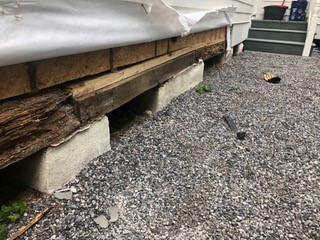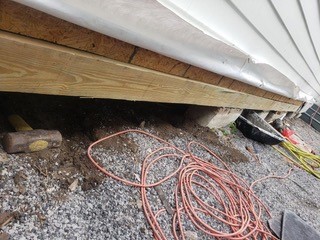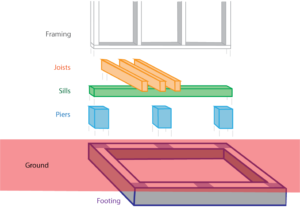We recently got the opportunity to repair a grand old staircase at this stately home near the New Orleans Fairgrounds.

While other parts of the home were in great condition, the staircase to the front door had been battered by weather for decades. The handrails were the first to suffer irreparable damage, at which point the homeowner replaced them with pipes as a temporary measure.
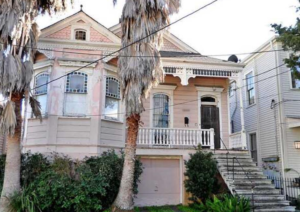
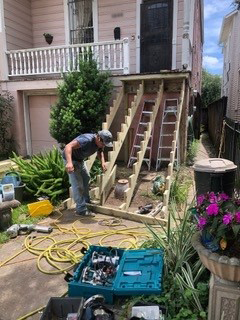
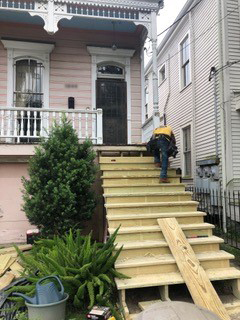
Then the treads themselves also became weak, forcing the homeowner to step carefully when mounting the stairs. A quick look under the staircase told the homeowner that it wasn’t just the treads that were weak—the risers, which the treads sit upon, had also sustained damage from weather and humidity.
The front steps were fast becoming a hazard not only for the homeowner, but also for anyone visiting the house, delivering packages, or providing utility services. The time was ripe to do something about it.
The first step in the repair process was to remove the existing staircase. Then our team put up new risers made of pressure-treated wood, which is designed to withstand humidity, rain, and other potentially damaging weather. The bottom end of the risers sits on a cement pad to prevent damage from the damp ground.
Next we added the treads and toe-kicks, and painted the staircase to provide further protection from the elements.
We were able to fabricate new handrails and posts by copying from existing ones elsewhere on house and the homeowner had salvaged most of the spindles from the previous staircase, saving a great deal of expense. Homeowners often ask us to incorporate items they already have into a repair or renovation. We’re always happy to do so, provided that the use of these elements won’t compromise safety or codes.
The result was a staircase that not only improved the house’s curb appeal, but is now safe to use.
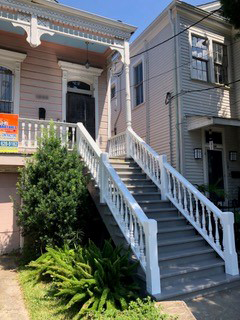
If you have a staircase that sags, creaks, or just plain feels unsafe, give us a call here at Richard Earls Construction.
